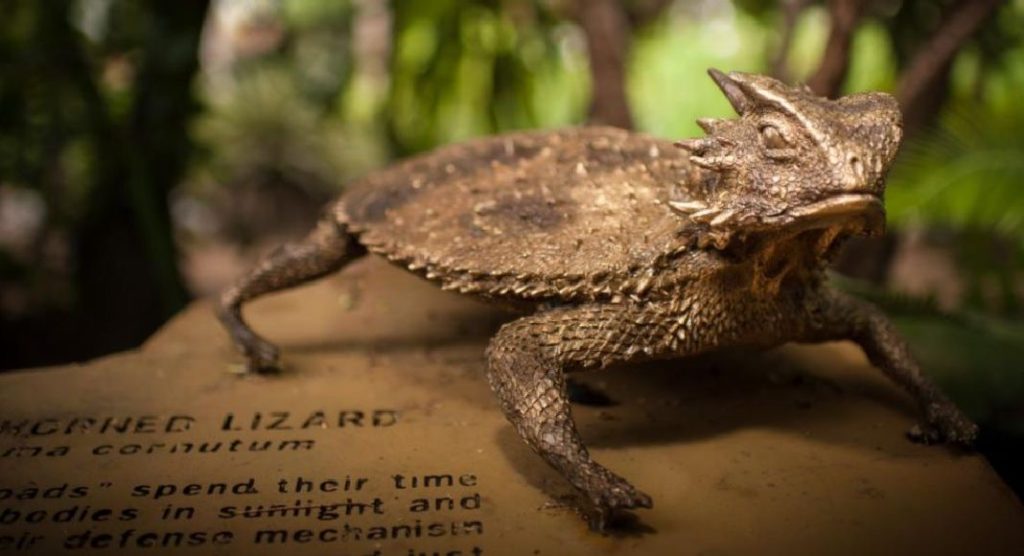
Texas Border Business
State Reptile of Texas Bronze at Quinta Mazatlan
Quinta Mazatlan Volunteer, Mary Thorne
When I was a kid I remember watching programs about Houdini the magician on TV. At some point I think I even wanted to be a magician. Occasionally I would try and do a magic card trick but I was never very good. I guess if I had wanted to be good at it I should have practiced. Many wild animals have behaviors and adaptations that seem magical to me. Yet they don’t need to practice these special behaviors because, for them, it’s instinctive.
Take, for instance, the state reptile of Texas, the Texas horned lizard. He has quite a few magical tricks tucked up his sleeve. He shares a common trick with many other animals – their ability to hide, otherwise known as camouflage. I finally saw my first Texas horned lizard a few weeks ago. It was much smaller than I expected and very difficult to see because it blended in so perfectly with its surroundings. I took a picture of it and posted it on Facebook. Most of the comments I got were “Where is it, I can’t find it.” Maybe the reason it took me so long to see one was because of its ability to vanish from sight.
When frightened, the Texas Horned Lizard will stand perfectly still and flatten its body against the ground. This adds to its camouflaging skill because it prevents its shadow from being seen. But, if it still feels threatened, the horned lizard has the ability to become very fat. It puffs up its body, causing the scales on its body to protrude which makes it difficult to swallow.
A unique trick the Texas horned lizard can perform is called rain harvesting. Like many animals that live in arid areas, they get most of their water from the food they eat or from licking dew off nearby plants. The horned lizard can also gather water during light rains by arching its back and causing rainwater to flow forward towards its mouth. I remember how unsuccessful I was as a kid running around in the rain with my mouth open trying to catch a few drops in my mouth. Once I had one of those practical joke flowers that squirt water. It was a lot of fun until my teacher took it away from me. That flower, however, reminds me of what I think is the most amazing thing the horned lizard can do. It squirts blood from a pore near its eye up to 5 feet away. The blood is mixed with a chemical that tastes bad and confuses predators like wolves and coyotes. This gives the horned lizard a chance to quickly hide or “disappear.” Good thing I only used water.
Come see the sculpture of the “Horned Houdini of the Desert” at Quinta Mazatlán along with many other bronze sculptures created by local artist Douglas Clark. You won’t have to worry about any magic tricks being played on you, but I can guarantee Quinta Mazatlán is a magical place.












